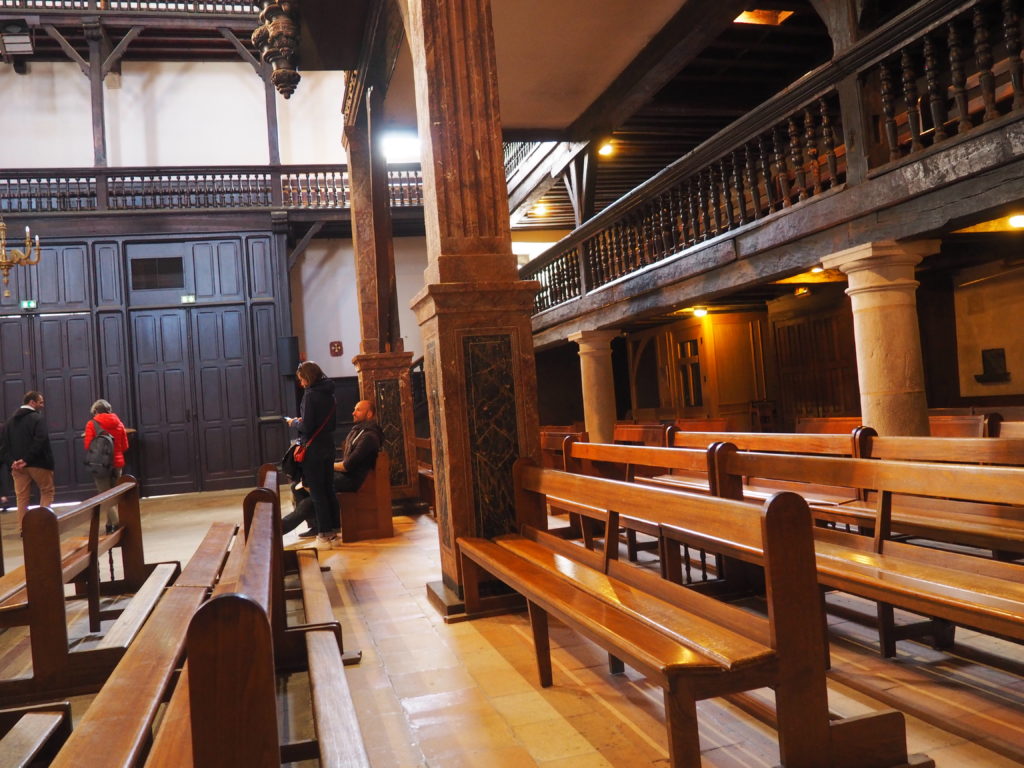Beginning with Pau (rhymes with “low”)

Henry IV was a monumental figure in the history of France. He brought a halt to the Wars of Religion and unified the country (forgive the gross oversimplifications). It takes some effort to imagine back to the 17th century when the Kings of Navarre controlled parts of the Gascon Pyrénées wedged between territories controlled by the French crown to the north and east, the English in territories to the west, and the Spanish to the south and when savagery ruled in the struggles coming out of the Protestant reformation.
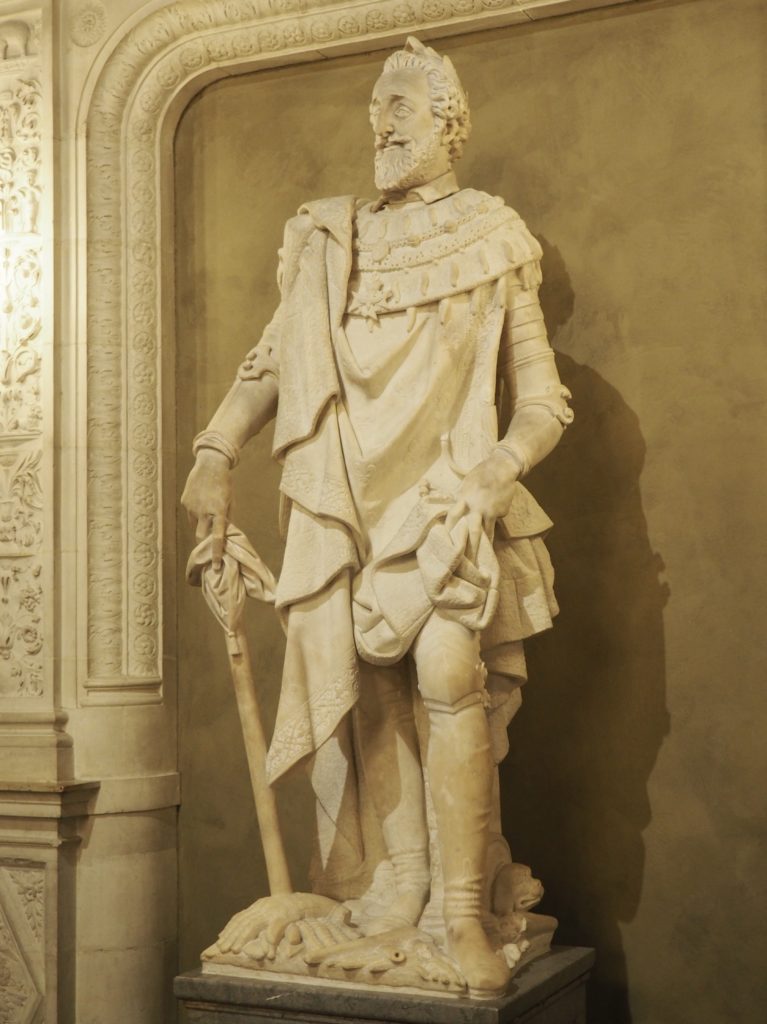
Henry IV 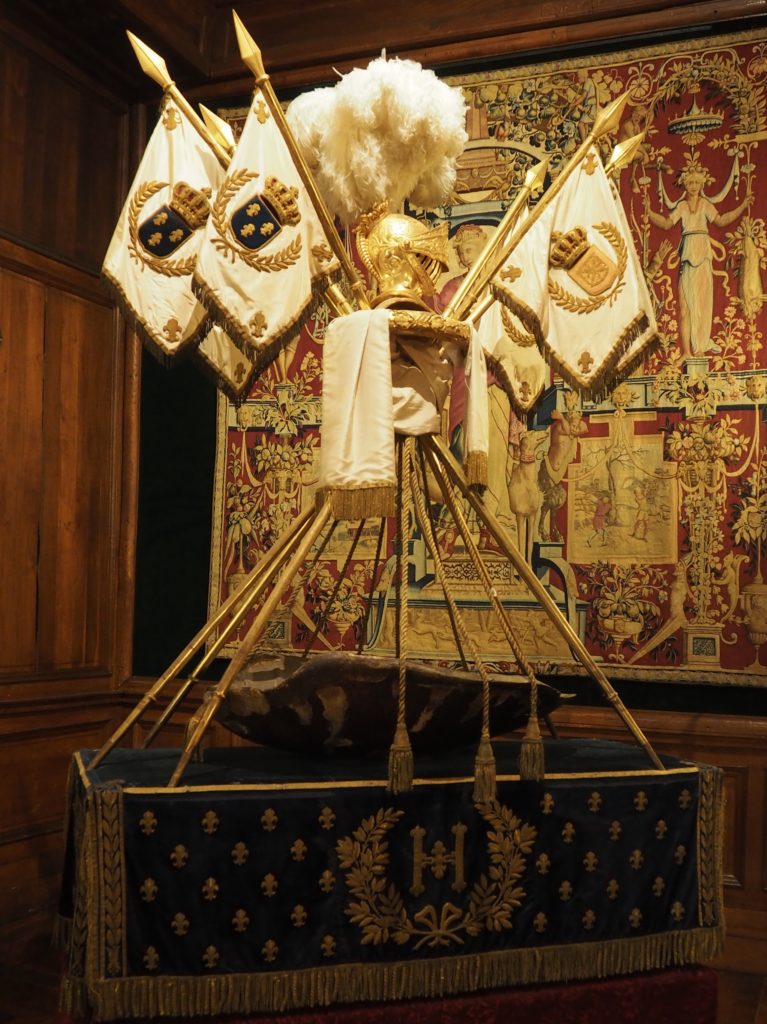
Galápagos tortoise shell, reputedly his cradle.
Henry was born in the fortified château at Pau to Jeanne d’Albret, Queen of Navarre (1553). The Queen was a staunch Protestant and Henry became an inspiring military leader in the Protestant forces. Abridging the story beyond reason, Henry switched sides a couple of times (he also had a claim to the French crown) became King of France as a Catholic, didn’t persecute the Protestants, and unified France (ta da!). Popular guy.

Our officious guide in the large dining room 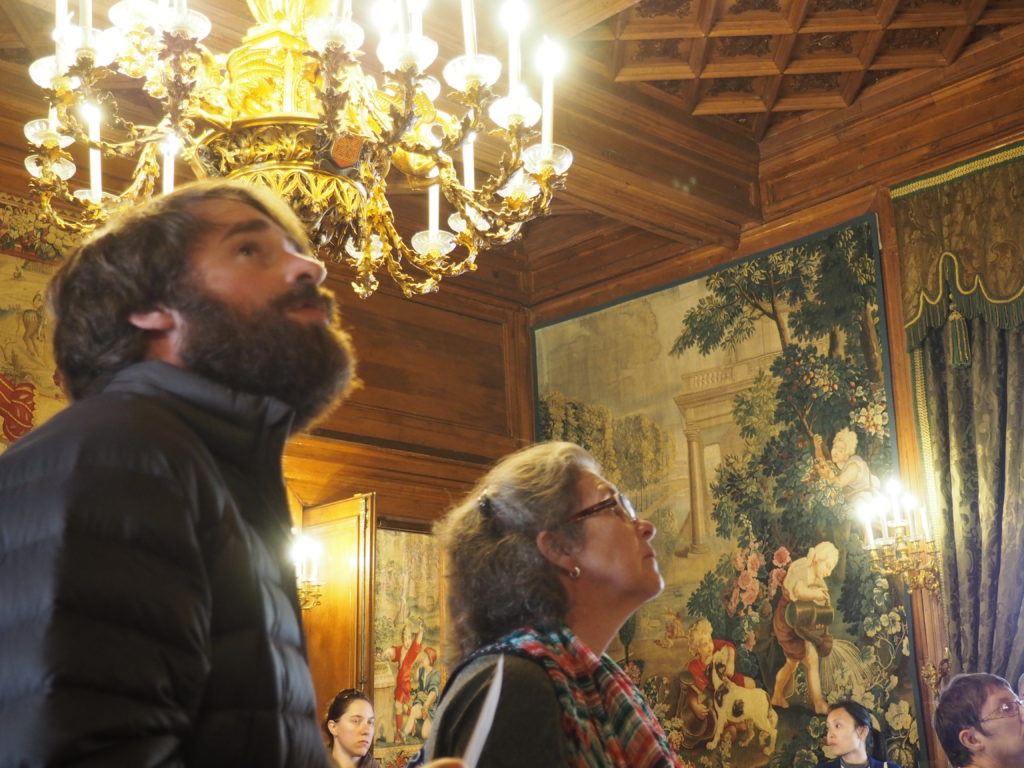

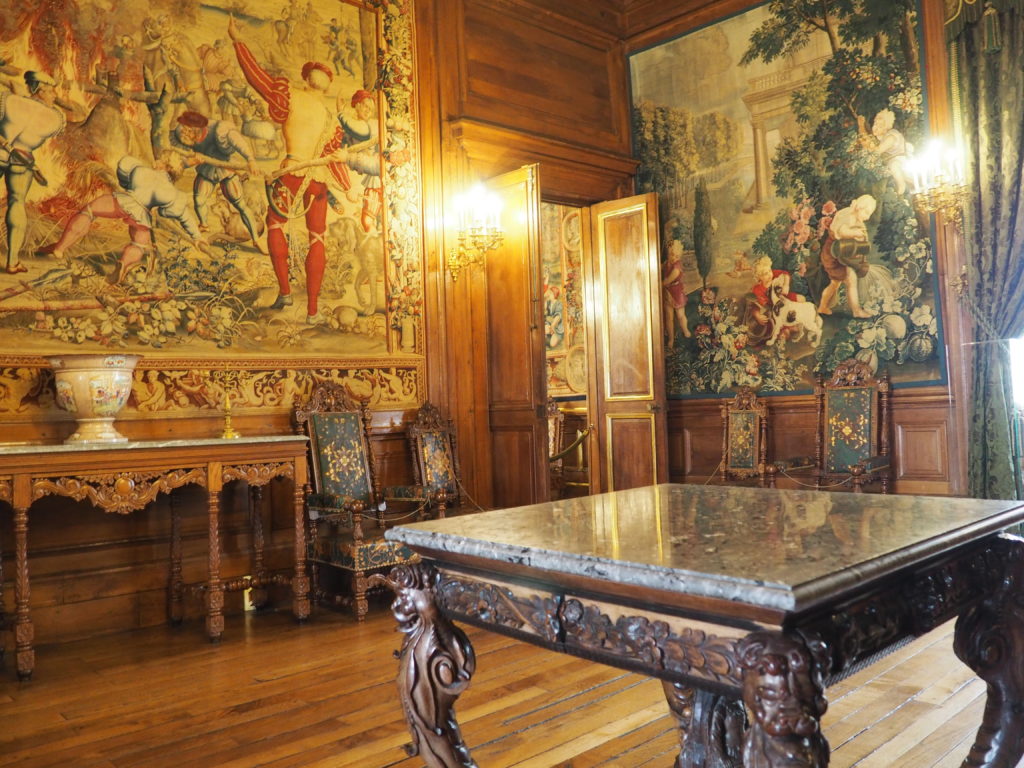
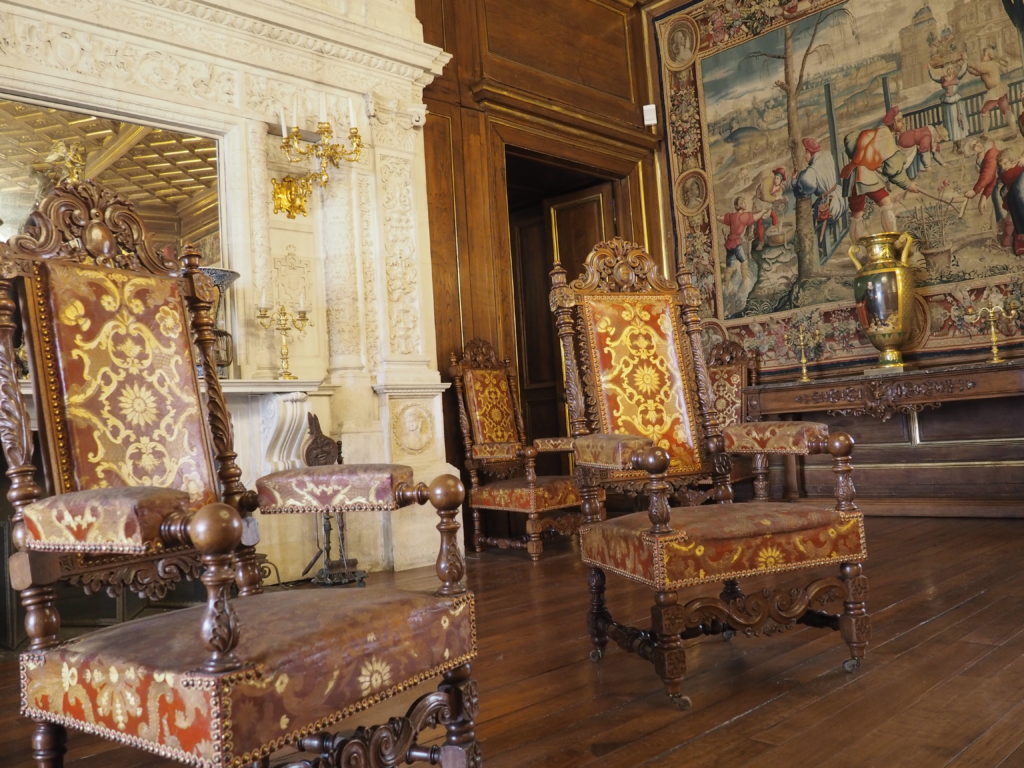
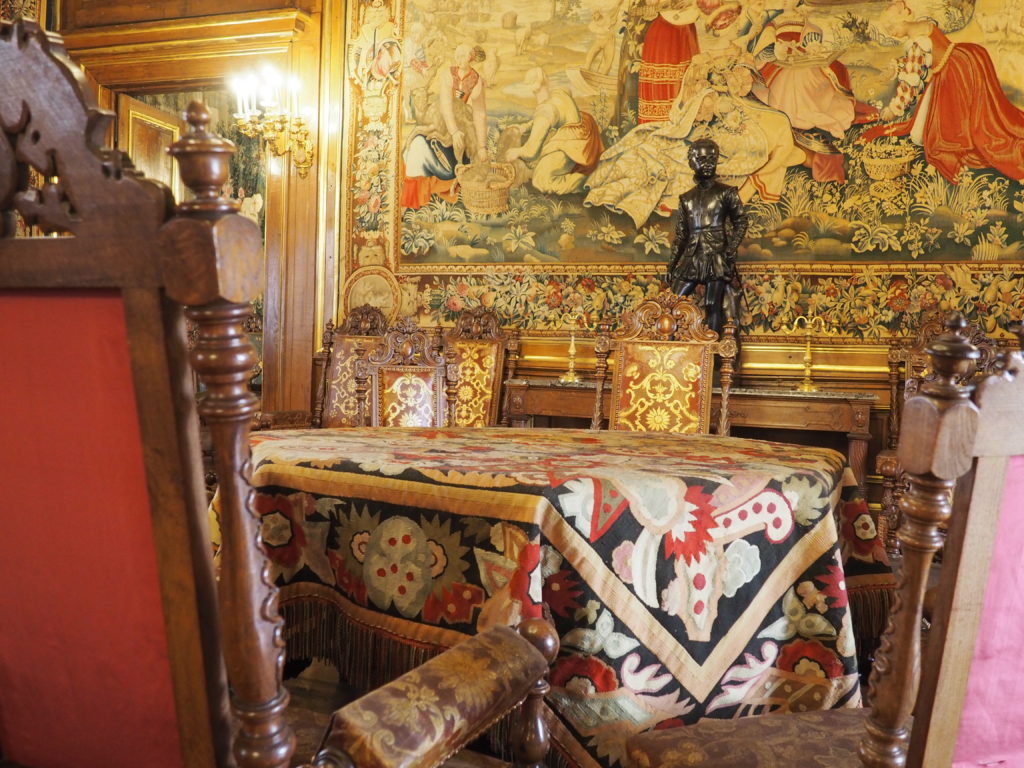

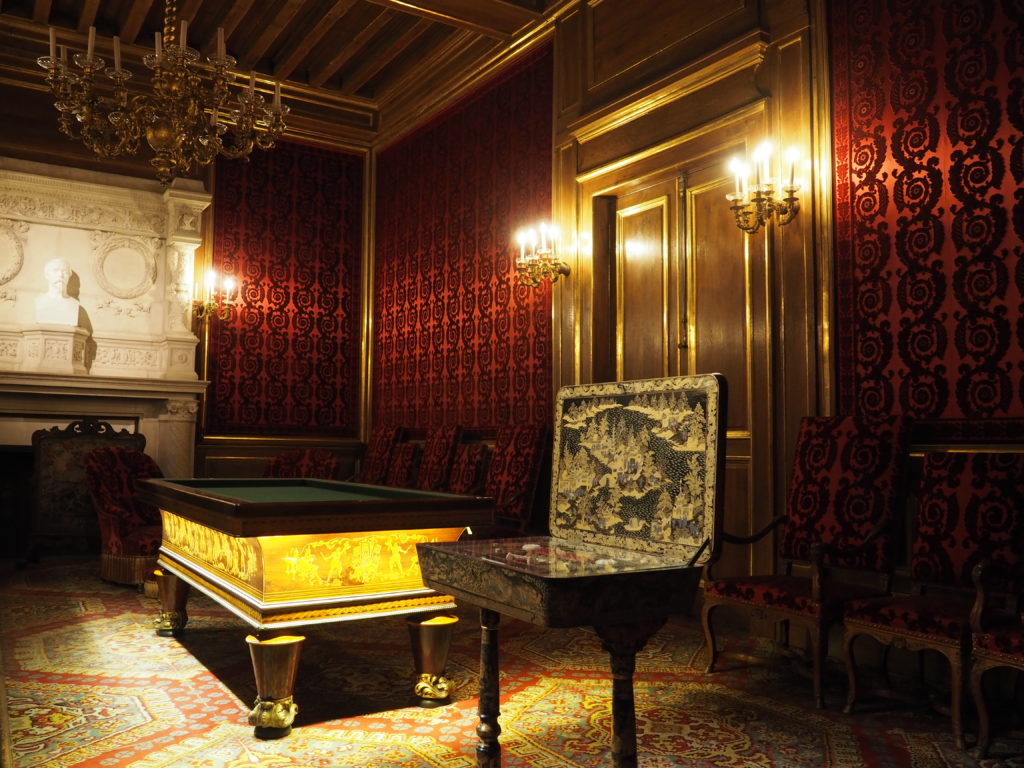

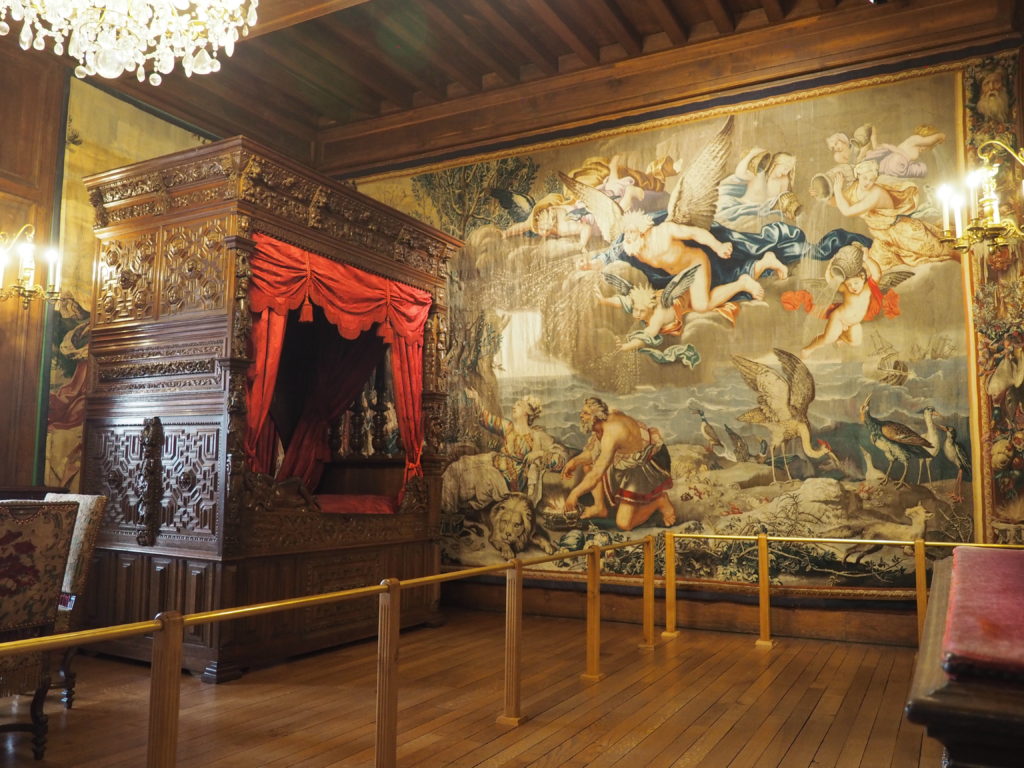
Restored in the 19th century, the interior of the Château is (as you can see) quite sumptuous with seemingly innumerable tapestries from the Royal storehouse, many of them Gobelins tapestries.
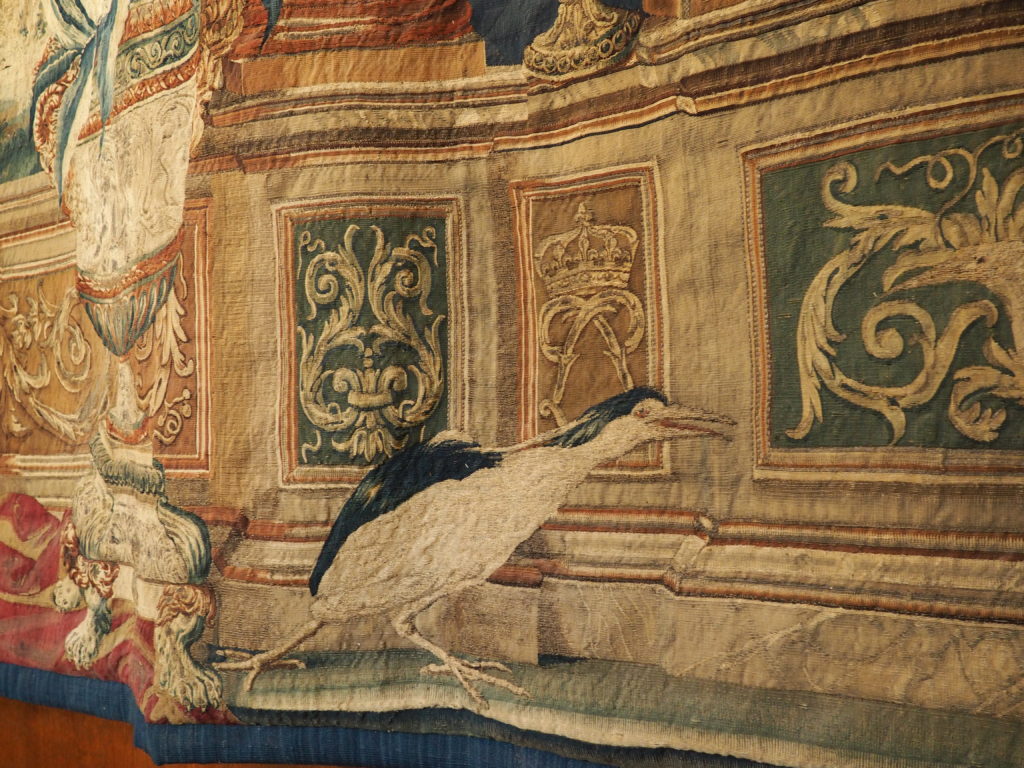



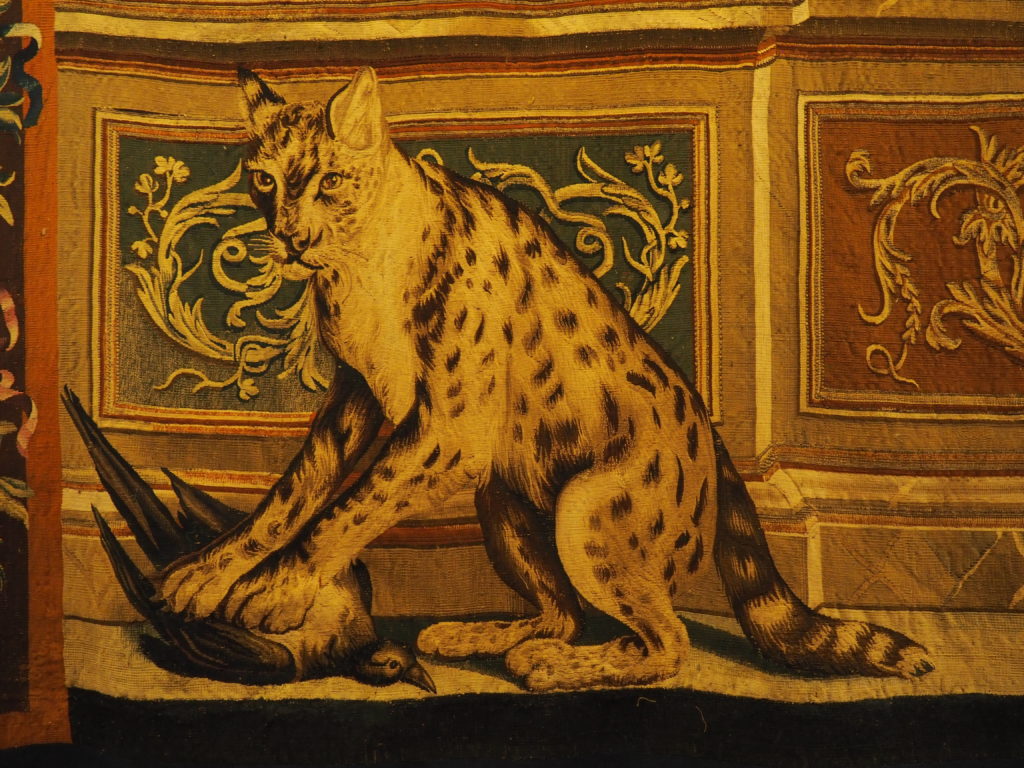
And one wasn’t fast enough.
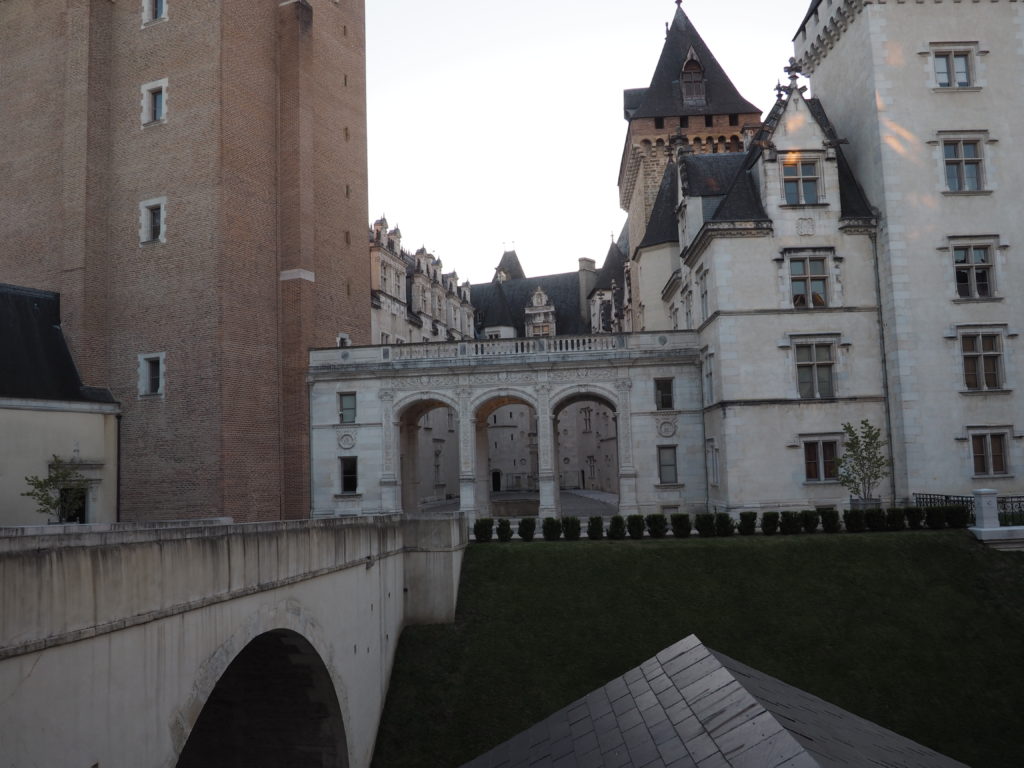
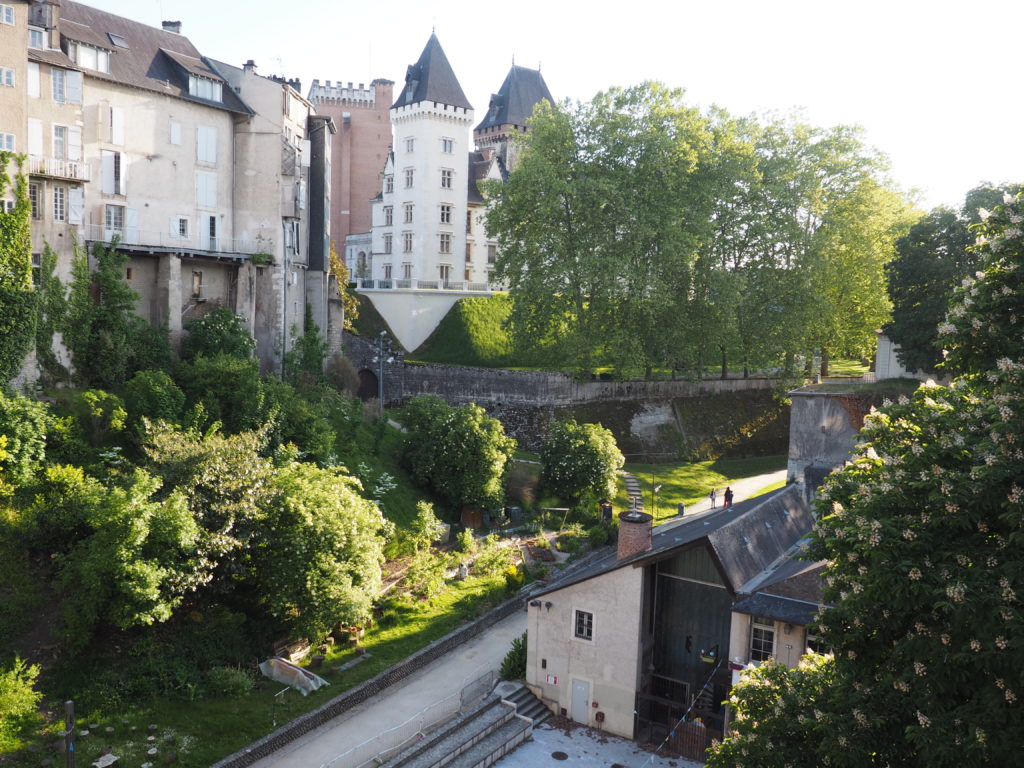
Pau has been fortified since the 11th century and became the capital of Béarn. The fortified castle was constructed overlooking the Gave de Pau in the 14th century by the Count of Foix, Gaston Fébus. If you’re like us and never heard of the term “Gave,” it’s a local word for “river,” pronounced with an “a” as in “cat.” Anyway, the Count seems to have been an interesting fellow, a Gascon who wrote the “Book of the Hunt” in French as he was one of the leading huntsmen of his day and died of a stroke while washing his hands after a bear hunt (or so the story goes). The castle was subsequently transformed into the Renaissance Château and then completely remodeled in the 19th century with furnishings chosen by Louis-Philippe and Napoleon III.
More recently,

Les Halles 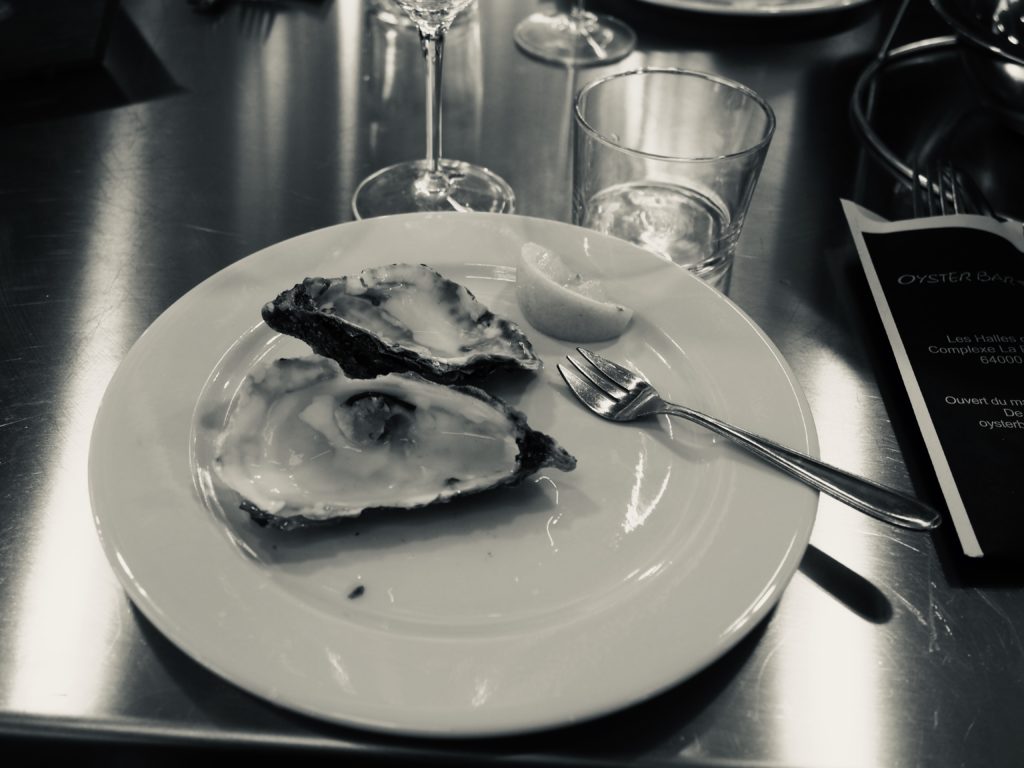
Remains of an Oyster Bar snack 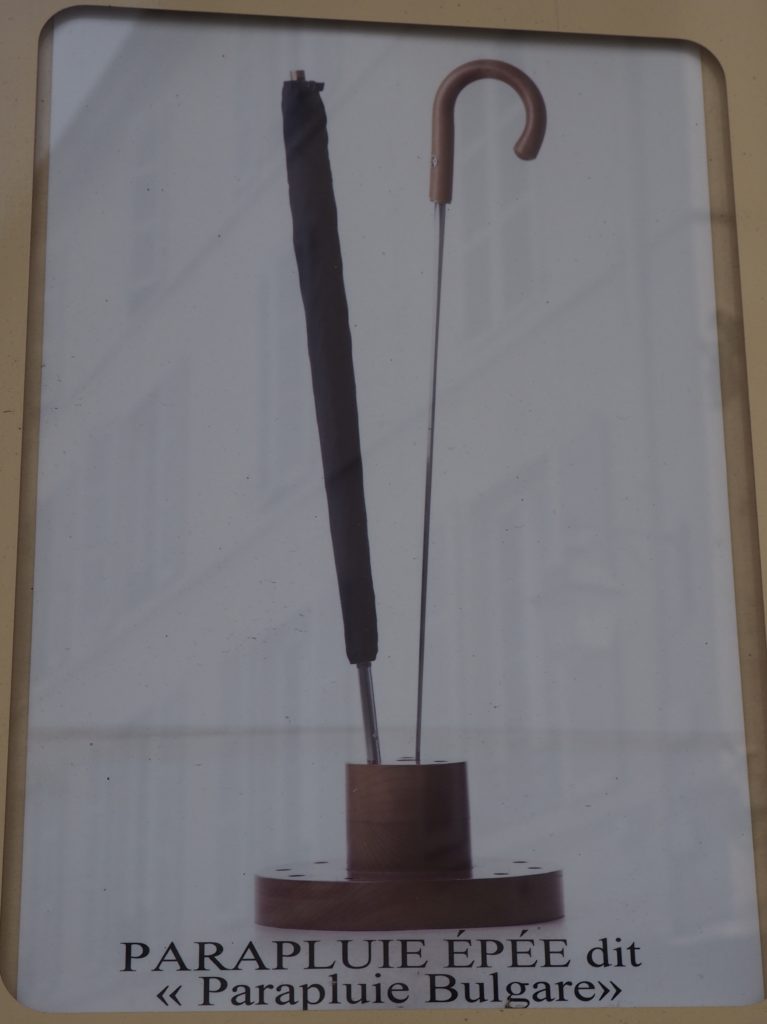
Pau remains a very pleasant small city and was a good base from which to explore the French borderlands. We enjoyed purchasing components for a lunch at our rental house from the merchants of the recently opened Les Halles, one of the most sparkling and nicest food markets we’ve seen. We also enjoyed poking in lots of shops and admired the window display of the umbrella maker. Pau is known for its artisanal umbrellas and we regretted not having an important reason to splurge on one. The aptly named item pictured above certainly seemed like one of those things businesses offer for sale but never expect anyone to buy (we hope). [We also hope you recall the political assassinations with poisoned umbrella tips for which the Bulgarian spy agency was notorious.]

Saint Jean de Luz
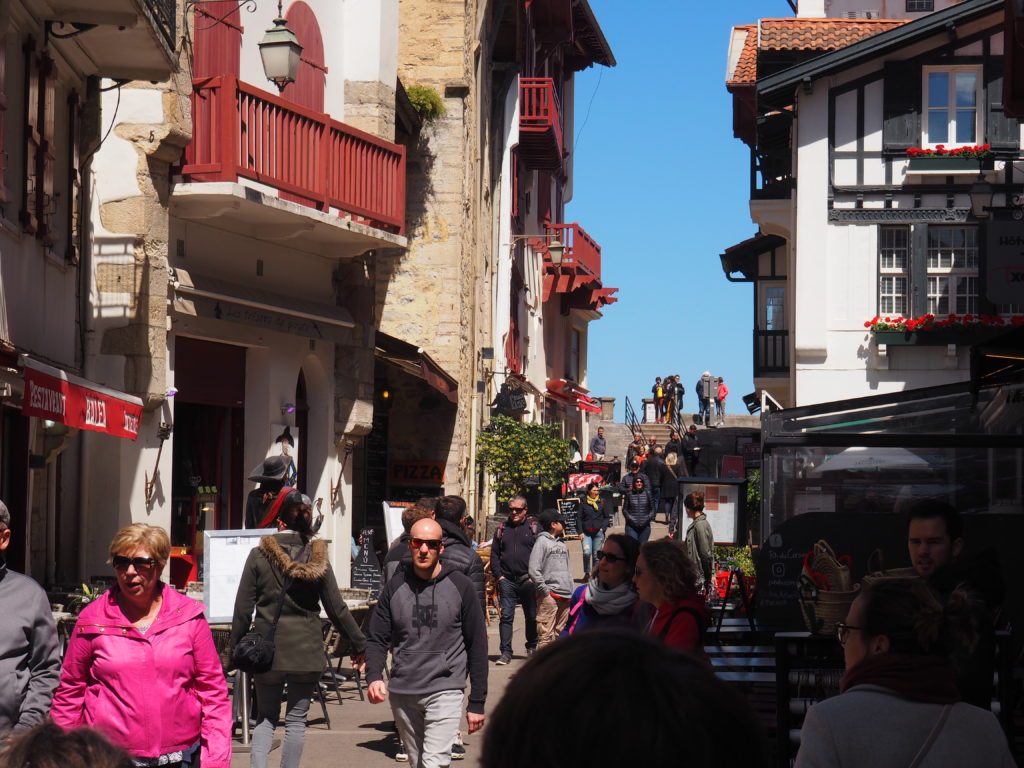
In this most Basque of French towns, a charming seaside town just down the coast (where it starts bending west to outline the Iberian peninsula) from the much larger and glitzier Biarritz, the central historical figure is Louis XIV. He wasn’t born here, but here is where he got married.
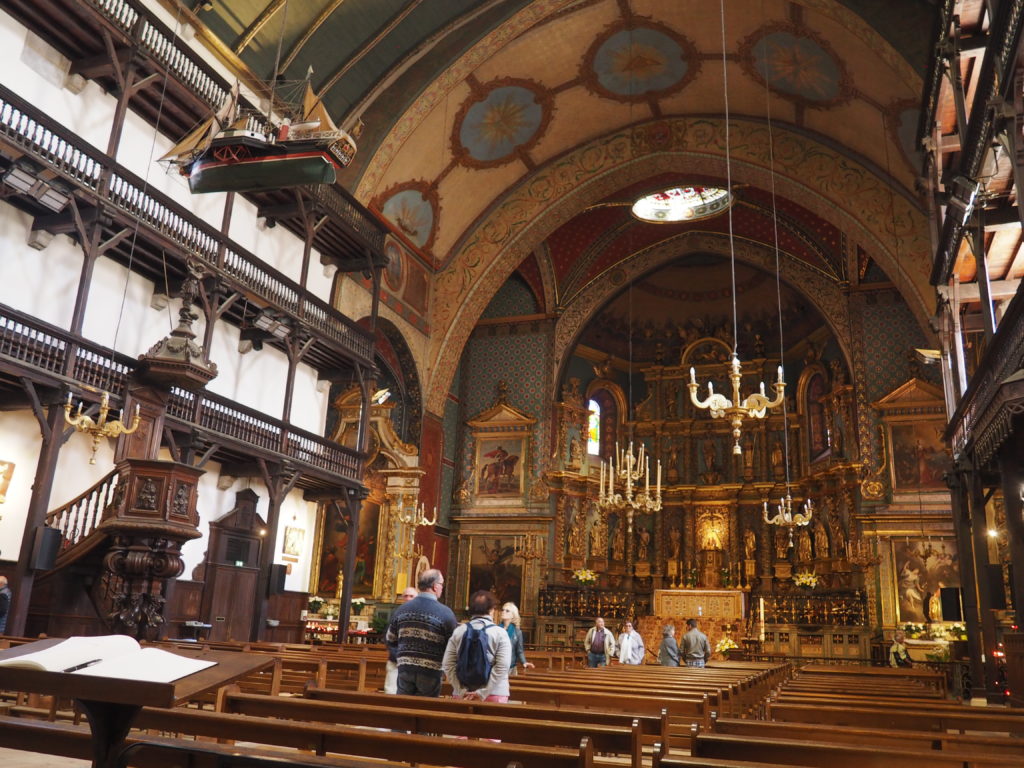
A year before that marriage (1559) Louis, alas a persecutor of Protestants, achieved a notable success in concluding the Treaty of the Pyrénées which divided the Navarre between France and Spain, signed on Pheasant Island in the middle of the river that continues to form the border between the two countries (about midway between St. Jean de Luz and St. Sebastián). But, it’s the wedding to Maria Theresa (the Infanta of Spain) that put St. Jean de Luz on the map. It was a major diplomatic event made possible in part by Cardinal Mazarin (Louis’ chief minister) prevailing upon the King to give up his passion for the Cardinal’s niece (who the Cardinal sent into exile). There were Swiss Guards lining the route, companies of Gentlemen-at-Arms, the King’s mother Anne of Austria drawing the curtain on the nuptial bed and the walling up of the door through which the royal couple left the door after the ceremony. Against all odds, it seems to have been a happy marriage. We toured the house where the King stayed and brought his bride (now known in his honor as the “Maison Louis XIV” and where photographs aren’t permitted) which was built in 1643 by a shipowner in whose family it remains. It was well worth visiting even by those of us with limited French. The imposing and well furnished house pretty much remains in original but well-maintained 17th century condition, with barely noticeable concessions to modernity such as a microwave in the enormous kitchen discretely draped over with a cloth.
After falling on hard times for quite a few centuries, the town has regained its population of about 15,000 and is a great place to soak up some atmosphere. The name “de Luz” is derived for the Basque word for a swamp. The city long suffered from catastrophic flooding until sea walls were installed, allowing it to flourish.





